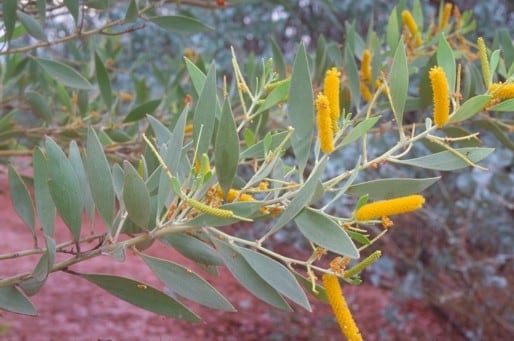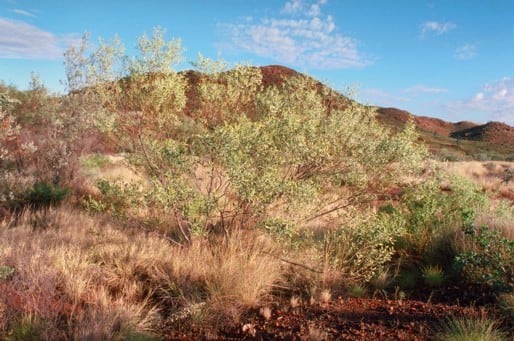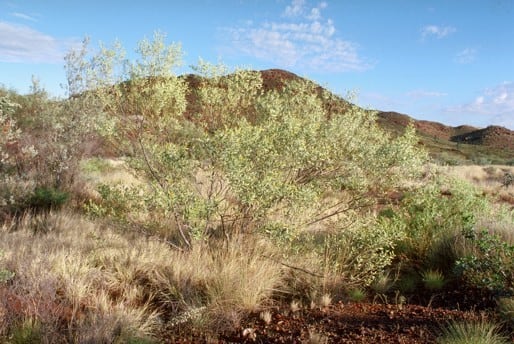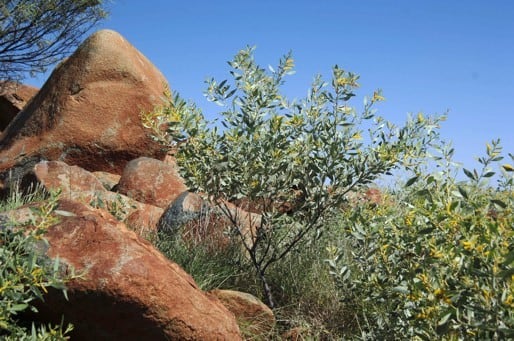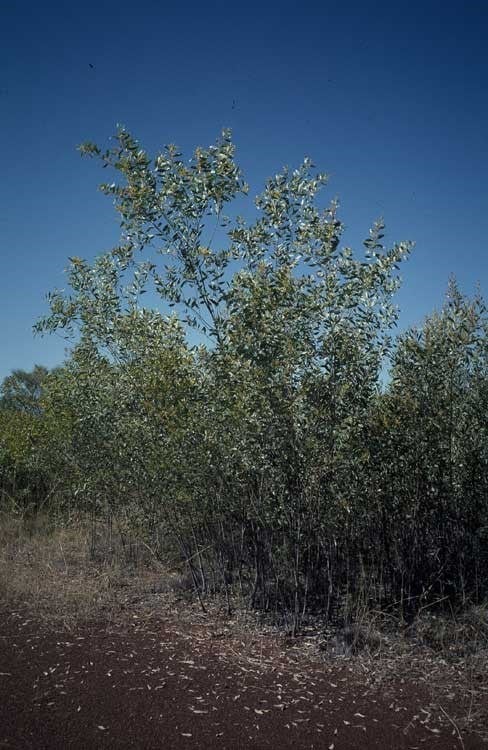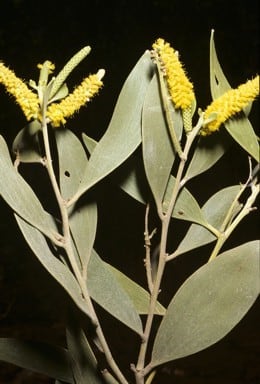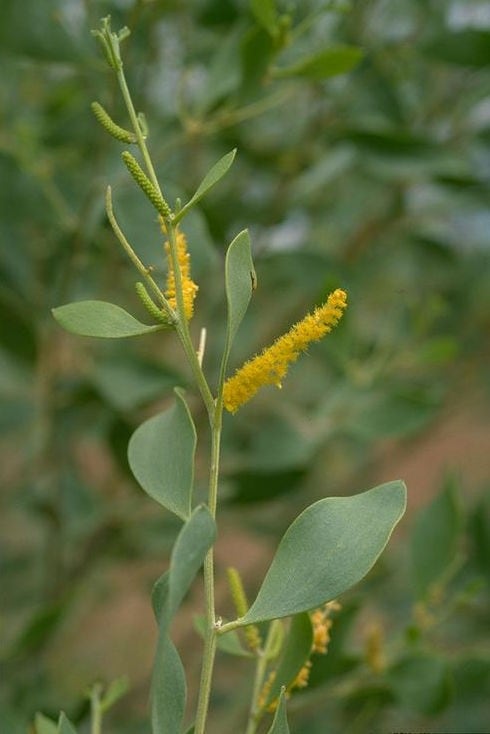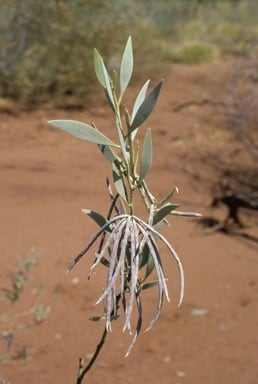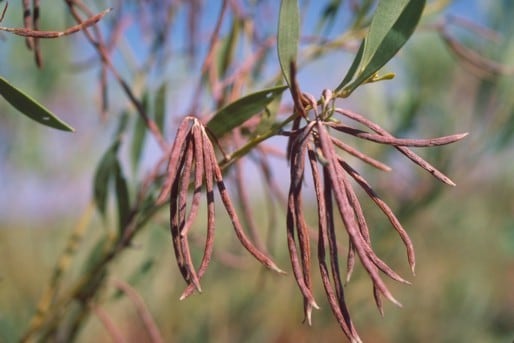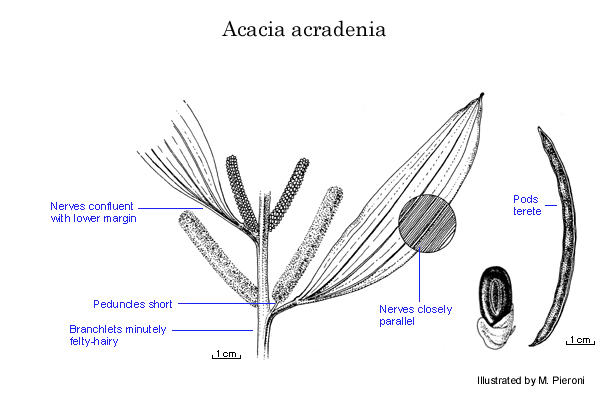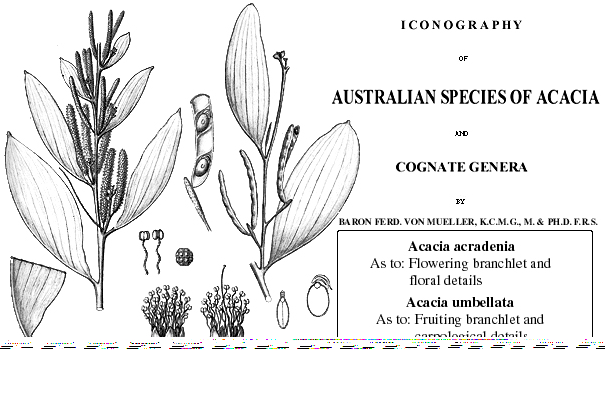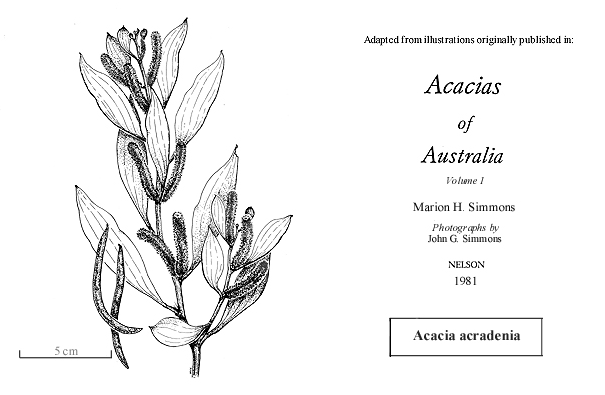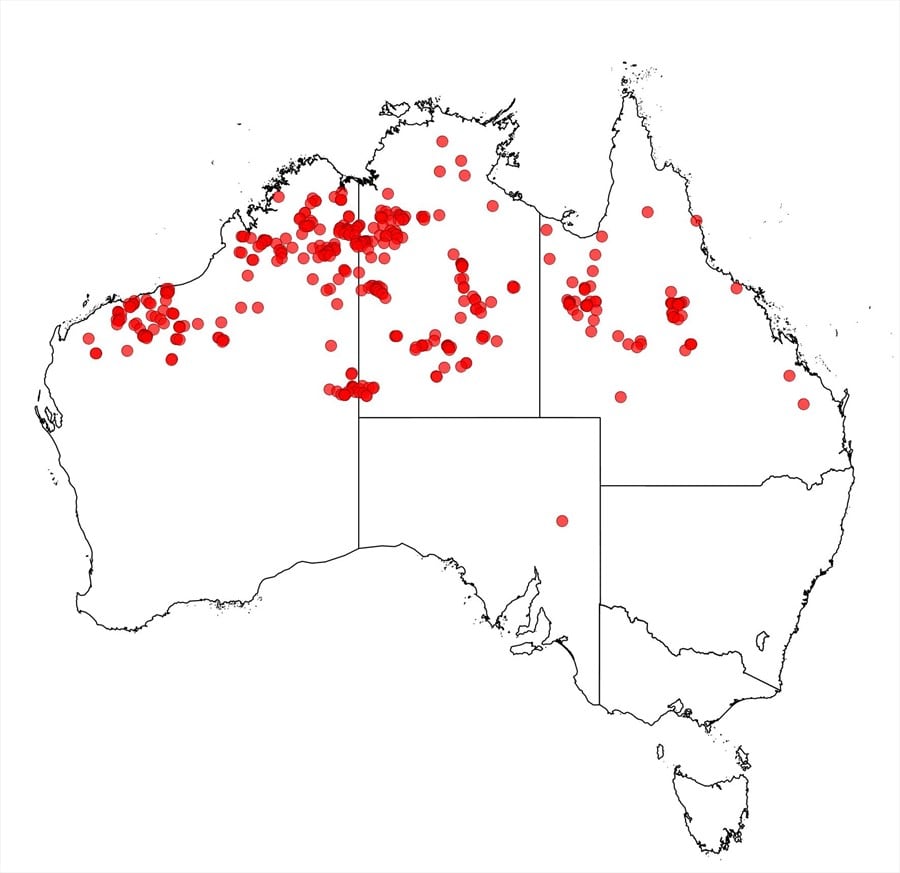Acacia acradenia F.Muell.
WATTLE
Acacias of Australia
Family
Fabaceae
Distribution
Common in the arid country of northern Australia from the Fortescue R. and Kimberley, W.A., across the N.T. eastwards to Prairie, Qld, as far as 25ºS.
Description
Shrub 1–4 (–7.5) m tall, ±obconic and commonly spindly. Bark grey. Branchlets minutely appressed puberulous, the hairs often embedded in resin. Phyllodes mostly obliquely elliptic or narrowly elliptic, 4–12 (–16) cm long, 10–30 (–40) mm wide, rigid, acute to obtuse, minutely ±velvety with hairs not visible to unaided eye, pale bluish green or milky pale green, multistriate, with minor nerves numerous (7–9 per mm) and not anastomosing, with 3 or more prominent nerves confluent near base. Spikes 2–6 (–7) cm long, orange or golden; peduncles 1–3 mm long, densely puberulous. Flowers 5‑merous, resinous; calyx 0.9–1.2 mm long, dissected for 1/5–1/2, puberulous; corolla 1.8–2.2 mm long, dissected for c. 1/2, glabrous; ovary puberulous. Pods narrowly linear, ±compressed-terete, not or scarcely constricted between the seeds, 4–9 (–13) cm long, 2.5–3.5 (–4) mm wide, thinly crustaceous, straight to slightly curved, ±velvety to almost glabrous, reddish brown and often scurfy. Seeds longitudinal, narrowly oblong- to oblong-elliptic, 3–6 mm long, dark brown; pleurogram with yellowish halo; areole ±open, depressed, olive-brown.
Phenology
Flowers all year.
Habitat
Grows in skeletal sandy soils and red earths, on laterite, sandstone or calcrete, on rocky hillsides or in gorges, often along creeks with eucalypts and spinifex. A relatively short-lived species that is killed by hot summer fires; it regenerates from seed and may form localized colonies in areas following disturbance.
Specimens
W.A.: 8 miles [12.8 km] SW of Lamboo Stn, E Kimberley, M.Lazarides 6303 (CANB, NSW); ‘Palm Springs’, 11 km W of Millstream Stn, A.N.Rodd 2814 (NSW, TL). N.T.: Vaughan Springs, G.Chippendale 880 (DNA, NSW). Qld: 20 miles [32 km] SW of Cloncurry, M.Lazarides 4408 (CANB, NSW).
Notes
Details of Aboriginal use of A. acradenia are given by P.Latz, Bushfires & Bushtucker 85 (1995).
The plate labelled ‘Acacia acradenia’ by F.J.H. von Mueller, Iconogr. Austral. Acacia dec. 10 [pl. 4] (1888), is a mixture of two species; figs 1–8 represent A. acradenia and 9–13 A. umbellata. These two species are frequently confused, although A. acradenia has longer corollas, longer pods, spikes (only rarely with a rudimentary shoot between them) borne in pairs in the phyllode axils, and appressed puberulous-pubescent branchlets, peduncles, rachises and part or most of phyllodes. A specimen from the McKinley Ra., S.A., (viz. 1876, Sutherland, NSW), which is much further south than all other records, suggests a possible outlier population or doubtful record that requires further investigation.
FOA Reference
Data derived from Flora of Australia Volumes 11A (2001), 11B (2001) and 12 (1998), products of ABRS, ©Commonwealth of Australia
Author
Edited by B.R.Maslin
Dr M.D.Tindale and Dr P.G.Kodela with the assistance of M.Bedward, S.J.Davies, C.Herscovitch, D.A.Keith and/or D.A.Morrison
This identification key and fact sheets are available as a mobile application:
URL: https://apps.lucidcentral.org/wattle/
© Copyright 2018. All rights reserved.
